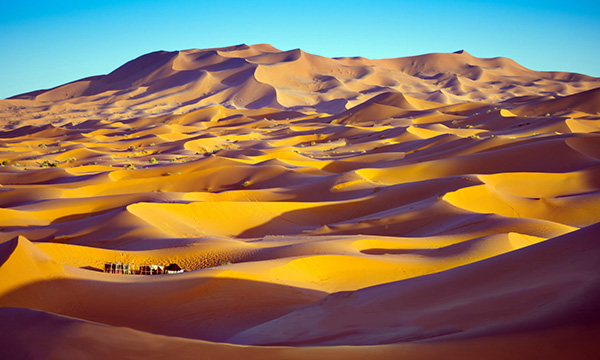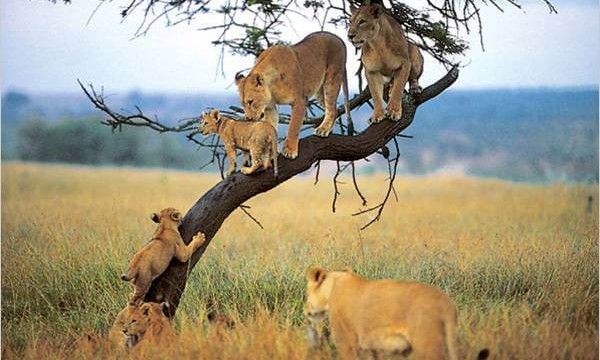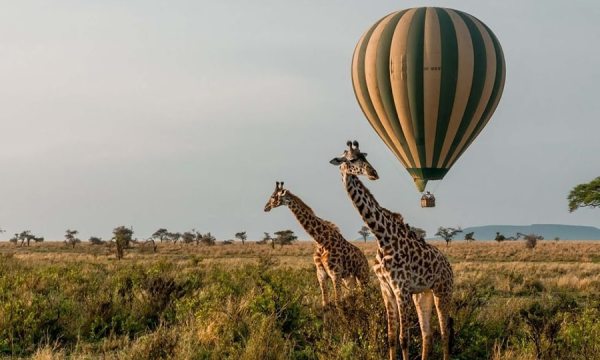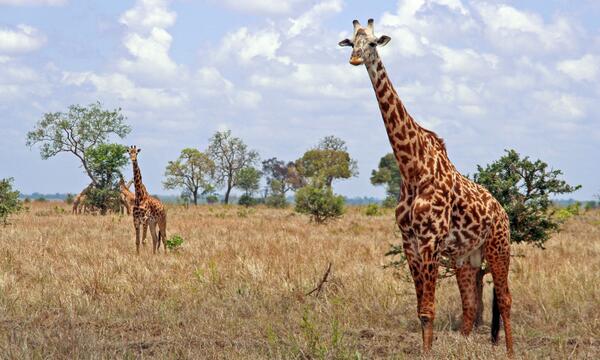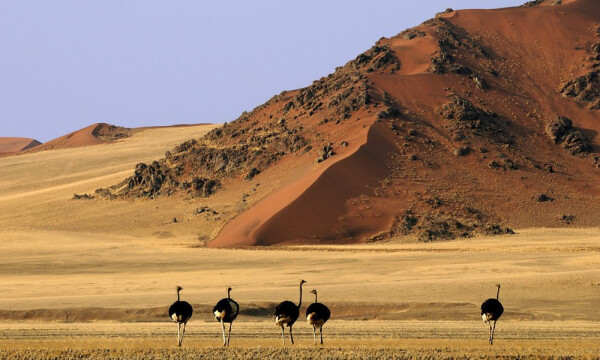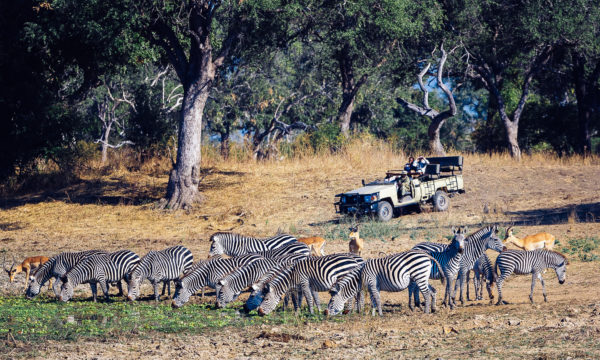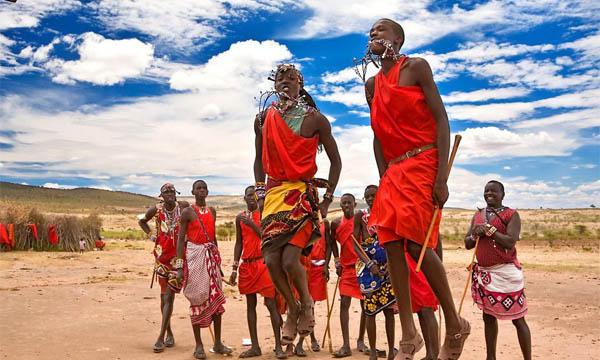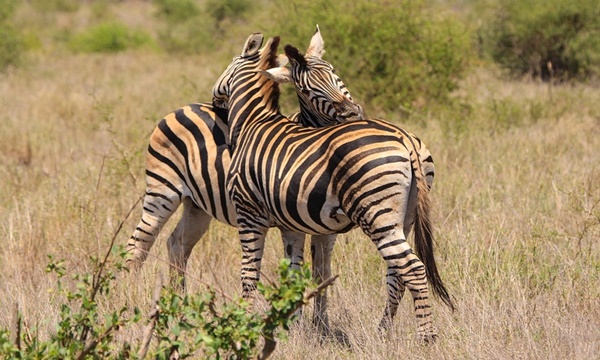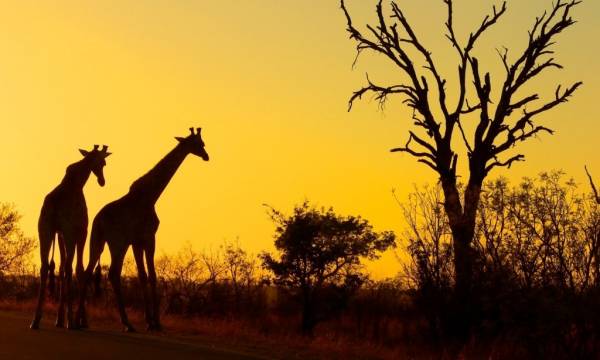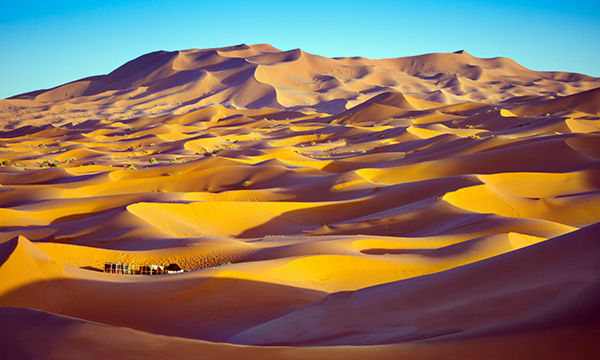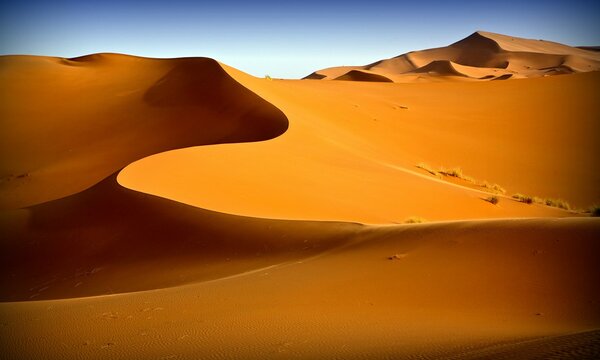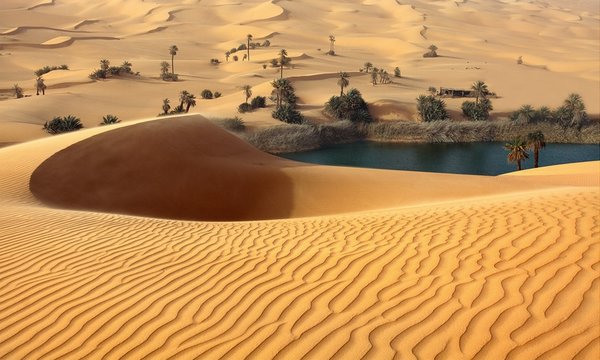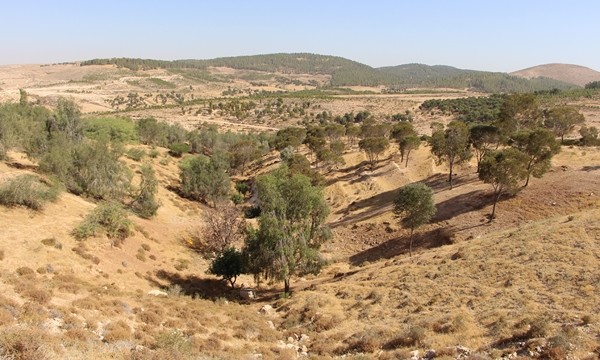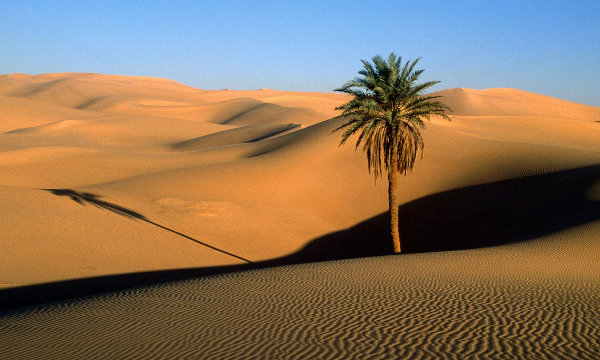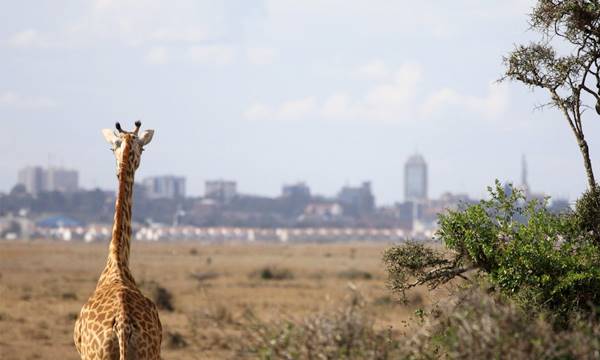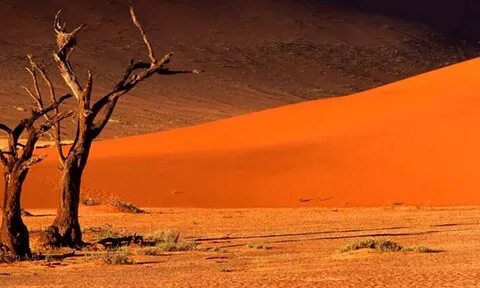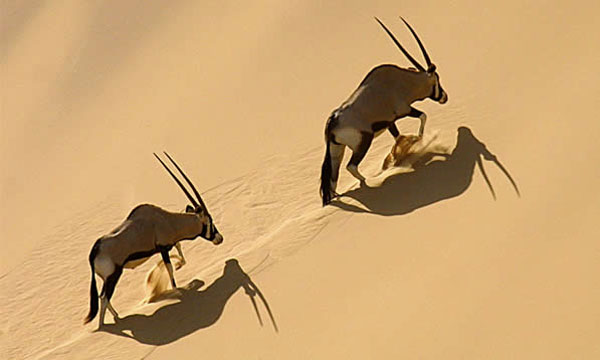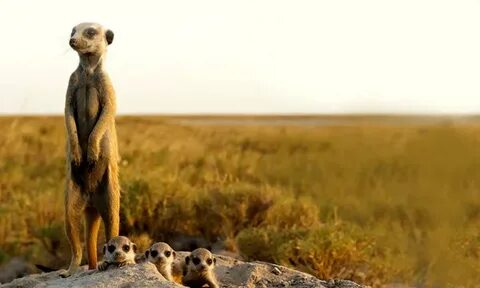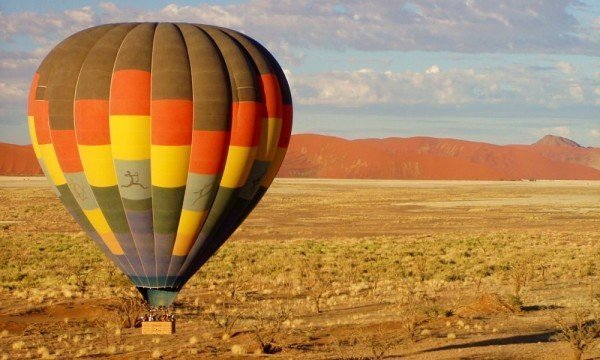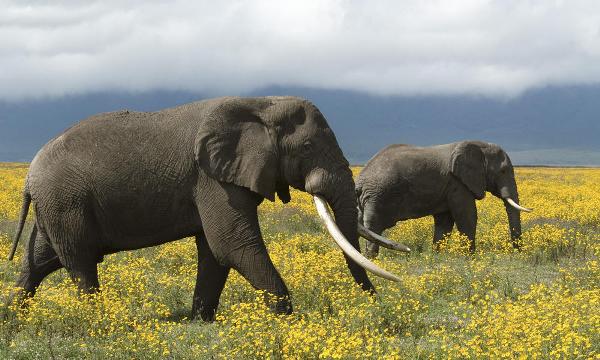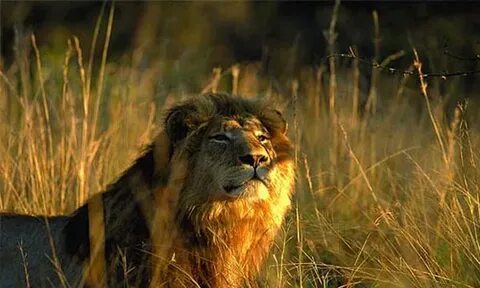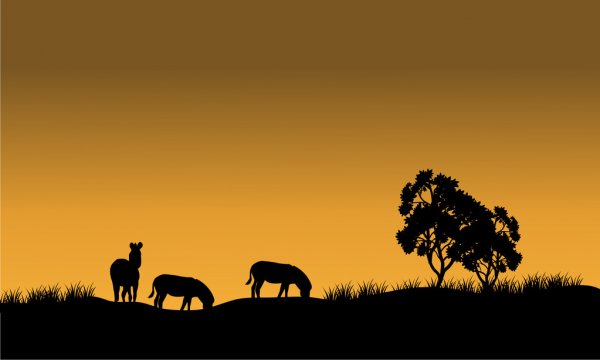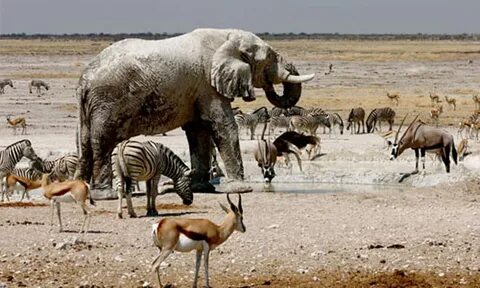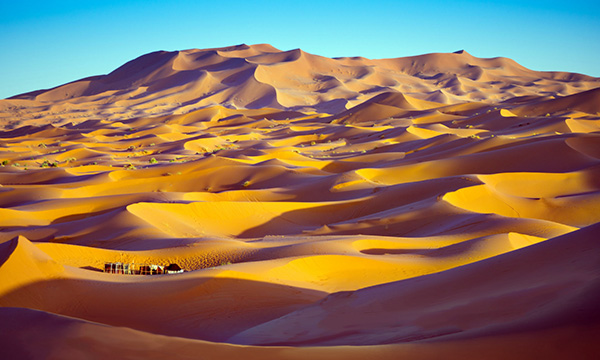Call Us
8:00am - 17:00PM
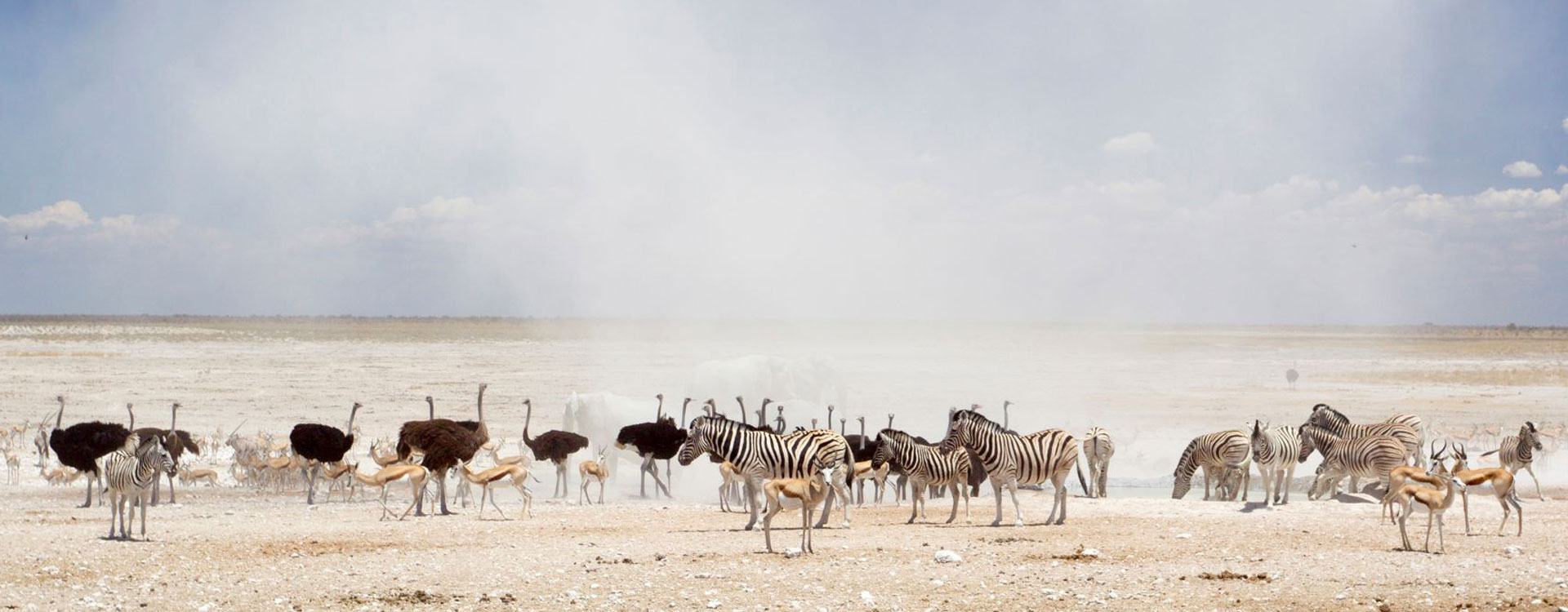
Etosha National Park
About Etosha National Park
Etosha National Park is one of Namibia's top tourist destinations, known for its diverse wildlife, stunning landscapes, and unique experiences. Located in the north of the country, the park covers an area of over 22,000 square kilometers and is home to over 100 mammal species, including elephants, lions, leopards, and rhinos, as well as hundreds of bird species. One of the best ways to experience the park's natural beauty and wildlife is through an Etosha National Park Safari.
Here we will explore everything you need to know about Etosha National Park safaris, including the best time to visit, the top wildlife to see, and the different Namibia Safari options available.
Etosha Tours and Safaris
We Think You’ll Love
Best Time To Visit
The Best Time To Visit Etosha National Park is between July and October. During these dry winter months, wildlife viewing is at its peak as animals gather around the limited water sources, making them easier to spot. While the wet season from November to April offers its beauty, wildlife tends to disperse due to the abundance of water, making sightings less frequent. For the most vivid animal encounters, aim for the dryer part of the year.
Wildlife
Etosha National Park is a Namibia Wildlife wonder, home to four of the Big Five, minus the buffalo. Here, you can see herds of elephants, zebras, and special creatures like the black-faced impala and damara dik-dik. Lions, leopards, and sometimes even the shy black rhino gather around the waterholes, making every visit filled with memorable moments and close encounters with nature.
What To Experience
We think you will love
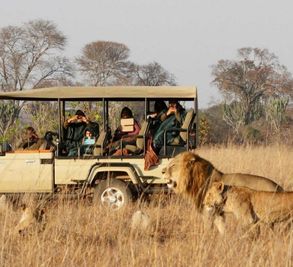
Game Drives
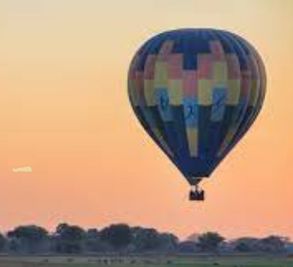
Ballon Safari
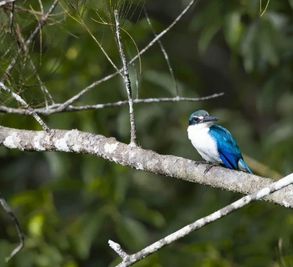
Birding

Walking Safari
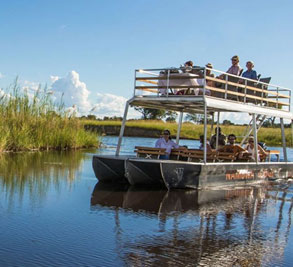
Boating Safari
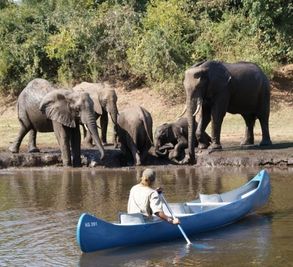
Canoeing
Etosha National Park Travel Guide
We Think You’ll Love
History of Etosha National Park
Etosha National Park was established in 1907 by the German colonial government, making it one of the oldest conservation areas in Africa. The park was initially created to protect the region's wildlife and to provide a hunting ground for German colonizers.
However, hunting was banned in the park in 1954, and designated as a game reserve. In 1967, it was officially declared a national park and became a UNESCO World Heritage Site in 2007.
Best Time To Visit Etosha National Park
The Best Time To Visit Etosha National Park depends on your interests and preferences. However, the peak season for safari in Etosha is during the dry season, which runs from May to October.
During this time, the weather is dry and mild, making it easier to spot wildlife as they gather around waterholes. The vegetation is also less dense, making it easier to spot wildlife. The months of June to August are the busiest and most popular for a safari in Etosha, so it's important to book accommodations and activities well in advance.
If you prefer a quieter experience with fewer tourists, you may want to consider Etosha National Park Safari during the rainy season, which runs from November to April. During this time, the park's landscapes are lush and green, and the wildlife is more active.
However, some areas of the park may be inaccessible due to flooding, and mosquitoes and other insects can be more prevalent. It's also important to note that the park's camps and lodges may have limited availability during the rainy season.
Overall, the best time to visit Etosha National Park for wildlife viewing is during the dry season, while the best time for photography and enjoying the park's landscapes is during the rainy season.
Ultimately, the best time to visit Etosha National Park depends on your interests and preferences, as well as the availability of Namibia Accommodations and Namibia Safari Activities.
Dry season and wet season in Etosha National Park
Etosha National Park experiences two distinct seasons: a dry season and a wet season. The dry season typically runs from May to October, while the wet season runs from November to April. Each season has its unique characteristics and impacts on the park's wildlife and ecosystem.
Dry Season:
During the dry season, the temperatures in Etosha National Park can be extremely high, with average daily temperatures ranging from 25-35°C. The lack of rain also means that the vegetation is dry and sparse, making it easier to spot wildlife congregating around the remaining water sources, such as waterholes and springs.
The dry season is generally regarded as the best time for wildlife viewing in Etosha National Park. As water becomes scarce, the animals are forced to gather around the remaining water sources, making it easier to spot a wide range of animals, including elephants, lions, giraffes, and antelopes.
Wet Season:
The wet season in Etosha National Park is characterized by hot and humid conditions, with average daily temperatures ranging from 30-40°C. During this season, the park receives its annual rainfall, which can cause flooding in some areas of the park.
The wet season is a time of renewal and rejuvenation for Etosha's ecosystem, with the rains bringing new growth and a flush of greenery. The park's wildlife also benefits from the increased availability of water and food, with many animals giving birth during this time.
However, the wet season can make wildlife viewing more challenging as the animals are more dispersed across the park and not reliant on the few remaining water sources. The heavy rains can also make some roads in the park impassable, limiting access to certain areas.
|
Season |
Months |
Weather/Climate |
Wildlife Viewing |
Crowds/Tourism |
|
Dry Season |
May to October |
Dry and mild |
Excellent |
Busy |
|
Rainy Season |
November to April |
Lush and green |
Good |
Fewer tourists |
Getting to Etosha National Park
Etosha National Park is accessible by both road and air. Here are some options for Getting To Etosha National Park:
By Road:
Self-Drive: You can rent a car in Windhoek or any other major city in Namibia and drive to Etosha National Park. The park is located about 435 km north of Windhoek and the drive takes approximately 5-6 hours.
Private Transfer: You can also hire a private transfer from Windhoek or other major cities to take you directly to Etosha National Park.
Public Transportation: There are public buses and minibuses that travel to Etosha National Park from Windhoek and other major cities in Namibia.
By Air:
Fly to Windhoek: You can fly into Hosea Kutako International Airport in Windhoek and then rent a car or hire a private transfer to Etosha National Park.
Fly to Ondangwa: The closest airport to Etosha National Park is Ondangwa Airport, which is located about 90 km from the park. You can fly into Ondangwa from Windhoek or other major cities in Namibia and then hire a private transfer or take a taxi to the park.
Getting Around Etosha National Park
Once you’re in Etosha National Park, here’re some ways you can get around Etosha National Park and explore its diverse flora and fauna.
Self-Drive:
Self-driving is the most popular way to explore Etosha National Park. Visitors can rent a car or bring their own and drive through the park at their own pace. The park has well-maintained roads, and most of the main attractions are accessible by car. Self-driving allows visitors to stop and explore at their leisure and provides a more flexible experience.
Guided Game Drives:
Guided game drives are a great way to explore the park and learn from experienced guides who know the area intimately. Visitors can book guided game drives through one of the lodges or tour operators in the park. Game drives are usually conducted in open safari vehicles, which provide an excellent opportunity for wildlife viewing and photography.
Night Drives:
Etosha National Park is open 24 hours a day, and visitors can book night drives to explore the park after dark. Night drives offer a unique opportunity to see nocturnal animals, such as hyenas, lions, and leopards, as they become active after sunset. Visitors can book night drives through one of the lodges or tour operators in the park.
Walking Safaris:
Walking safaris are a unique way to experience the park's wildlife and landscapes up close. Visitors can book guided walking safaris through one of the lodges or tour operators in the park. Walking safaris provide an opportunity to explore areas that are not accessible by car and offer a more intimate experience with the park's wildlife.
Cycling:
Cycling is another way to explore the park and its surrounding areas. Visitors can rent bicycles from some of the lodges or tour operators in the park and explore the park's network of roads and trails. Cycling provides an excellent opportunity to experience the park's landscapes and wildlife at a slower pace.
Wildlife in Etosha National Park
Etosha National Park is known for its diverse wildlife and is home to over 100 mammal species, making it one of the best places in Africa to see wildlife. Here are some of the top animals to look out for on an Etosha National Park Safari:
- Elephants:
Etosha National Park is home to a large population of elephants, and visitors can often see them in groups around watering holes.
- Lions:
Lions are one of the most sought-after animals on safari in Etosha. Visitors can spot these majestic predators in various parts of the park, including around watering holes and on open plains.
- Leopards:
Leopards are the most elusive of the big cats, but they can still be spotted in Etosha National Park. They are often seen at night, so visitors may want to consider a night drive to increase their chances of seeing them.
- Rhinos:
Etosha National Park is home to both black and white rhinos, which are often seen grazing on the grasslands.
- Giraffes:
The tall and graceful giraffes can be seen wandering around the park, browsing tall trees and bushes.
- Zebras:
The iconic black-and-white stripes of zebras can be seen grazing in herds throughout the park.
- Wildebeest:
The wildebeest, also known as the gnu, is another common sight in Etosha National Park, often seen in large herds.
- Cheetahs:
Cheetahs are the fastest land animals in the world and can be seen sprinting across the park's open plains.
- Hyenas:
Hyenas can be seen scavenging and hunting in the park, often at night.
- Birds:
Etosha National Park is also a haven for birdwatchers, with over 340 species recorded in the park, including eagles, vultures, owls, and various water birds.
Etosha Birdlife
Etosha National Park is a birdwatcher's paradise, with over 340 bird species recorded in the park. From soaring eagles to delicate weavers, here are some of the bird species you can spot on an Etosha National Park Safari Tour-
|
Species |
Description |
|
Secretary bird |
Tall bird of prey that hunts snakes and other small prey on the savannah |
|
Kori bustard |
The largest flying bird in the world, often seen walking or running across the park's plains |
|
Ostrich |
The world's largest bird, often seen roaming the park in search of food |
|
Crimson-breasted shrike |
Striking bird with a bright red breast, often seen perched on trees and bushes |
|
Lilac-breasted roller |
One of the most beautiful birds in the park, with iridescent feathers |
|
Pale chanting goshawk |
Bird of prey often seen perched on trees and poles, scanning the savannah for prey |
|
African hoopoe |
Distinctive bird with a curved bill and a distinctive call |
|
Greater flamingo |
Large wading birds often seen feeding in the park's shallow pans |
|
White-backed vulture |
One of Africa's most iconic birds of prey, often seen circling overhead, searching for carrion |
|
African fish eagle |
Majestic birds of prey are often seen perched on trees or flying over water, hunting for fish |
|
Yellow-billed hornbill |
A type of hornbill with a large, curved bill and distinctive call |
Engendered Wildlife Species in Etosha National Park
Etosha National Park is home to a variety of endangered and vulnerable species that are protected under Namibian conservation laws. Here are some of the endangered species found in Etosha National Park:
- Black Rhino
- Cheetah
- African Wild Dog
- Lion
- Brown Hyena
- Damara Dik-Dik
- Roan Antelope
Safari Activities in Etosha National Park
Etosha National Park offers a wide range of safari activities for visitors to experience the park's diverse wildlife and unique landscapes. Here are some of the top safari activities to do in Etosha National Park Safari.
- Game Drives
Game drives are one of the most popular safari activities in Etosha National Park. Visitors can take a guided game drive in an open-top safari vehicle to explore the park and spot a variety of wildlife. Game drives are usually offered early in the morning or late in the afternoon when wildlife is most active.
- Night Game Drives
Night game drives offer a unique opportunity to see the park's nocturnal wildlife, such as lions, leopards, and hyenas. Visitors can take a guided night drive in the park to see these animals in their natural habitat.
- Self-Drive Safaris
Etosha National Park offers self-drive safari options for visitors who want to explore the park on their own. Visitors can rent a vehicle and drive through the park, stopping at various waterholes to watch wildlife and take photos.
- Walking Safaris
Walking safaris are a great way to get up close and personal with the park's wildlife and experience the natural environment. Visitors can take a guided walking safari with an experienced guide to explore the park's vegetation and spot smaller animals like birds and insects.
- Bird Watching
Etosha National Park is home to over 300 species of birds, making it a great destination for birdwatchers. Visitors can take a guided bird-watching tour or explore the park on their own to spot a variety of bird species, including ostriches, eagles, and flamingos.
- Cultural Tours
In addition to wildlife viewing, visitors can also take cultural tours in Etosha National Park to learn about the park's history and the culture of the local communities. Cultural tours may include visits to traditional villages, museums, and cultural centres.
- Photography Safaris
Etosha National Park offers unique opportunities for photography safaris, with its stunning landscapes and diverse wildlife. Visitors can take a guided photography safari or explore the park on their own to capture amazing photos of the park's wildlife and natural scenery.
The Cost of Safari Activities in Etosha National Park
The cost of safari activities in Etosha National Park can vary depending on the type of activity you choose Etosha National Park Tours. Here are some estimated costs for safari activities in Etosha National Park.
|
Activity |
Estimated Cost (NAD) |
Estimated Cost (USD) |
|
Guided Game Drive |
450 - 1,500 |
30 - 100 |
|
Self-Drive Game Drive |
80 per person per day |
5.50 per person per day |
|
Night Drive |
500 - 1,500 |
35 - 100 |
|
Bird Watching |
450 - 1,000 |
30 - 70 |
|
Photography |
2,000 - 6,000 |
140 - 420 |
|
Cultural Experience |
500 - 2,000 |
35 - 140 |
Where to stay in Etosha National Park
Etosha National Park offers a range of accommodation options, including lodges, campsites, and hotels. Here are some of the most popular Namibia Accommodations options:
Okaukuejo Rest Camp: This is the oldest and largest rest camp in Etosha National Park and is located near the southern entrance to the park. It offers a variety of accommodation options, including chalets, family chalets, and double rooms. The camp also features a restaurant, swimming pool, and a floodlit waterhole for game viewing.
Halali Rest Camp: Located in the middle of Etosha National Park, Halali Rest Camp offers a range of accommodation options, including bush chalets, double rooms, and camping sites. The camp features a restaurant, swimming pool, and a floodlit waterhole for game viewing.
Namutoni Rest Camp: This rest camp is located near the eastern entrance to Etosha National Park and offers a range of accommodation options, including chalets, family chalets, and double rooms. The camp features a restaurant, swimming pool, and a floodlit waterhole for game viewing.
Dolomite Camp: This luxury camp is located in the western part of Etosha National Park and offers 20 chalets with private decks and stunning views of the surrounding landscape. The camp features a restaurant, swimming pool, and a waterhole for game viewing.
Ongava Lodge: This private game reserve is located just outside of Etosha National Park and offers luxury accommodation in 14 chalets and a family unit. The lodge features a restaurant, bar, swimming pool, and game drives on its private reserve.
Mokuti Etosha Lodge: Located just outside of Etosha National Park's eastern entrance, Mokuti Etosha Lodge offers 106 rooms, including luxury rooms and suites. The lodge features two restaurants, a bar, swimming pool, and a spa. Game drives and other activities are also available.
Etosha Safari Lodge: This lodge is located just outside of Etosha National Park's southern entrance and offers 65 rooms, including chalets and family rooms. The lodge features a restaurant, bar, swimming pool, and a waterhole for game viewing.
Andersson's Camp: This eco-friendly camp is located in the private Ongava Game Reserve just outside of Etosha National Park's southern boundary. The camp offers 20 luxury tents and features a restaurant, bar, swimming pool, and game drives on the reserve.
Onkoshi Camp: This eco-friendly camp is located on the edge of Etosha Pan and offers luxury accommodation in 15 chalets. The camp features a restaurant, bar, and a swimming pool. Game drives and guided walks are available.
Tips And Other Safety Advice For Etosha
Etosha National Park is a beautiful and unique wilderness area, but it is important to be aware of some tips and safety advice to ensure a safe and enjoyable visit. Here are some tips and safety advice for visiting Etosha National Park:
Always Follow The Park Rules:
Etosha National Park has strict rules and regulations that are in place to protect the park's wildlife and visitors. Visitors should read and follow the park rules and regulations to ensure their safety and the safety of the park's wildlife.
Respect the wildlife:
Etosha National Park is home to a diverse range of wildlife, including some of Africa's most iconic species. Visitors should respect the park's wildlife and keep a safe distance at all times. It is also important to remember that the animals are wild and unpredictable, so visitors should never approach or disturb them.
Stay in designated areas:
Visitors should stay in designated areas and on marked roads and trails to avoid damaging the park's fragile ecosystems. Driving off-road is strictly prohibited and can result in hefty fines.
Carry enough water and supplies:
Etosha National Park is a remote wilderness area with limited facilities. Visitors should carry enough water and supplies for their trip, including food, sunscreen, and insect repellent. It is also important to note that the park's temperatures can be extremely high, so visitors should dress appropriately and stay hydrated.
Drive carefully:
Driving in Etosha National Park can be challenging, with gravel roads and wildlife crossing the roads at any time. Visitors should drive carefully and follow the speed limits to avoid accidents. It is also important to be aware of other vehicles on the roads and give way to larger vehicles, such as tour buses.
Beware of disease-carrying insects:
Etosha National Park is home to several species of disease-carrying insects, such as mosquitoes and ticks. Visitors should take precautions to avoid insect bites, including wearing long-sleeved clothing and using insect repellent.
Use a reputable tour operator:
If visitors are planning to book a guided tour, they should use a reputable tour operator that follows safety standards and regulations. Visitors should also check the operator's credentials and reviews before booking.
What to wear on Etosha Safaris?
What to wear on a safari in Etosha National Park largely depends on the time of year and the weather conditions. Here are some tips on what to wear during your Namibia Safari:
Comfortable and breathable clothing:
It is recommended to wear comfortable, lightweight, and breathable clothing during the daytime as temperatures in Etosha National Park can get very high. Natural, light-coloured fabrics like cotton and linen are good choices as they can help to keep you cool and prevent overheating.
Layered clothing:
During the cooler months, particularly in the early morning and evening, temperatures in Etosha can get chilly. It is therefore recommended to wear layered clothing, so you can easily adjust to the changing temperatures throughout the day.
Closed-toe shoes:
Closed-toe shoes with good traction are recommended to protect your feet and provide good grip when walking on uneven terrain during game drives and guided walks.
Sun hat:
A sun hat is essential to protect your head and face from the strong African sun. Choose a wide-brimmed hat that provides good coverage and ventilation to keep your head cool.
Sunglasses:
Sunglasses with good UV protection are important to protect your eyes from the glare of the sun.
Insect repellent:
Insects, particularly mosquitoes and ticks, are common in Etosha National Park. It is therefore recommended to use a good quality insect repellent on exposed skin to help prevent insect bites.
Neutral colours:
Neutral-coloured clothing, such as beige, khaki, and brown, are recommended when going on a safari as they blend in with the natural surroundings and do not attract unwanted attention from wildlife.
Final Thoughts
Etosha National Park - A Guide to Namibia's Iconic Destination! is a unique and captivating destination that offers visitors the opportunity to witness Africa's wildlife in their natural habitat. With its vast landscapes, diverse wildlife, and range of activities, it is a must-see destination for any Namibia Safari enthusiast. A visit to Etosha National Park is sure to leave a lasting impression and unforgettable memories.
best month to Visit Etosha National Park
We Think You’ll Love
Peak
Low
Mixed
Etosha in January
Etosha National Park Safaris in January experiences hot days with temperatures around 31°C and frequent rains, totalling 120mm. This month marks the lush green season, offering vibrant landscapes and active wildlife, though animals may be harder to spot due to the dense vegetation.
Etosha in February
February continues with warm days at 30°C and high rainfall (140mm), making it a good time for bird watchers. Etosha National Park Tours offer the chance to see the park's rich greenery and newborn animals, despite the wet conditions.
Etosha in March
March sees a decrease in rainfall (80mm) and slightly cooler days at 29°C. Etosha National Park Safaris during this time begin to enjoy easier wildlife spotting as the rains start to lessen, and the landscape remains lush and green.
Etosha in April
April marks the start of cooler and dryer days in Etosha, with temperatures at 28°C during the day and 15°C at night. Rainfall drops, making this month a good time for visitors to enjoy Namibia Safari Tours with clearer skies and increasing wildlife visibility.
Etosha National Park in May
With the onset of winter, May offers perfect weather for Etosha National Park Safari Tours. Daytime temperatures average 26°C and nights cool down to 11°C. Minimal rainfall means animals start to gather around waterholes, enhancing wildlife viewing opportunities.
Etosha in June
June offers cool daytime temperatures of 24°C and virtually no rainfall, marking the start of the dry season. Etosha National Park Tours in June benefit from increasing wildlife sightings around waterholes and pleasant weather for game drives.
Etosha in July
July is peak safari season in Etosha, with temperatures holding at 24°C and no rain. This is the Best Time for Etosha National Park Safaris, as animals’ frequent waterholes, making wildlife viewing exceptional. Nights can be cold, so pack accordingly.
Etosha in August
August continues the trend with warm days (27°C) and cold nights, still within the dry season. This period is ideal for Etosha National Park Safari Tours, offering clear skies, dry weather, and excellent wildlife spotting opportunities.
Etosha in September
In September, temperatures rise to 31°C, maintaining dry conditions. This is a busy time for Etosha National Park Safaris, with visitors flocking to see the abundant wildlife at water sources. Early booking is advised due to the popularity of the season.
Etosha in October
October sees temperatures peak at 33°C with a slight increase in rainfall (20mm). It marks the end of the dry season, still offering good wildlife sightings but with warmer days. Etosha National Park Tours during this month capture the transition of seasons.
Etosha National Park in November
November welcomes the start of the wet season, with temperatures around 32°C and rainfall increasing to 55mm. It's a vibrant time for bird watching and seeing young wildlife, though spotting animals can be more challenging due to the rains.
Etosha National Park in December
December in Etosha is characterized by warm temperatures (31°C) and increased rainfall (95mm), fully immersing the park in the wet season. This month offers lush landscapes and a chance to witness the park's rejuvenation, ideal for those interested in birdlife and the greener side of Etosha.
Frequently Asked Questions
We Think You’ll Love
The best time to visit Etosha National Park is during the dry season, which runs from May to October. During this time, wildlife is easier to spot as animals congregate around the waterholes.
Etosha National Park is home to a wide variety of wildlife, including elephants, lions, giraffes, rhinos, zebras, and many species of antelope.
While it is possible to explore Etosha National Park on your own, hiring a guide is recommended. Guides are knowledgeable about the park and can provide insight into the wildlife and ecosystem.
Yes, there are several accommodation options inside Etosha National Park, including campsites and lodges. However, it is recommended to book in advance as availability can be limited.
Visitors to Etosha National Park can enjoy a range of activities, including game drives, guided walks, and night drives.
Visitors should always follow park rules and guidelines to ensure their safety. It is important to keep a safe distance from wildlife and to stay inside designated areas.
Etosha National Park has a semi-arid climate, with hot temperatures during the day and cooler temperatures at night. The park experiences a dry season from May to October and a wet season from November to April.
We are thrilled to help you plan your perfect safari holiday
We'd be delighted to help you with any questions you have about properties & safaris. Please fill in the form below so that we can help you create your perfect safari holiday.
Or
Contact Us
Feel free to give us a call or send us an e-mail:
Start Planning Your Tailored African Safari

Expert Safari Knowledge
With decades of expertise, we're your trusted safari guides, ensuring every moment exceeds your expectations.

Tailor-made African Safaris
Tailored to your preferences, our African Safaris guarantee an adventure perfectly suited to your desires.

Long-term Relationships
Our enduring partnerships across Africa provide exclusive access and authentic experiences.

Carefree Travel
Leave your worries behind and accept carefree travel with Falcon Safaris, where every detail is handled to perfection.
Our Travelers Say

We travelled with Falcon Safaris in Zimbabwe and Botswana for 16 days. Falcon designed a wonderful trip with private guide to the most interesting sites in both countries. The organization of the whole trip was excellent, flights within the country, accommodation and activites. The guides were very knowledgable and told us a lot about the countries, their history, people, economy and much more. We visited the Great Zimbabwe Ruins, the Victoria Falls Tour and a number of national parks in both countries.
Rhino tracking was a real adventure! We had tremendous further game drives and saw very many animals - we did the Big Five. We had much more Victoria Falls Activities than planned and enjoyed very much.We strongly recommend Falcon Safaris to everyone planning a trip to Southern Africa and East Africa.
Wonderful trip to Zimbabwe and Botswana with excellent organization and very competent guides

Our Consultant Vimbai was very helpful and accommodating. We stayed at the Elephant hills hotel which was nothing short of amazing.Our activities included a helicopter flight, dinner cruise as well as a morning game drive. All the activities were absolutely amazing.
Exceptional!

We worked with Gertrude to schedule and organize everything and she did an excellent job. I asked a lot of questions via e-mail and she answered everyone in a timely helpful manner. Our guide at Victoria Falls was also great. He met us at the airport, provided a thoughtful tour of the Falls and got us to our next guide in Botswana. Our lodgings at River View Lodge were just as described- very comfortable and excellent food. All the staff were so pleasant and helpful. If I had to do it again I would arrange a morning boat ride as well. We only did the sunset boat rides and they were the high point of our entire trip- we saw so many animals and our guide was very knowledgeable. Just a great experience. Our lodgings at Oddball's Enclave was rustic and we loved it. So great to disconnect from the world for a bit. Leo, our guide, was the best - got us out and about, saw fantastic wildlife and got back to camp safely each time. Doc manages the camp so well. This whole trip was planned and organized by Falcon Safaris and we could not have been happier.
Fabulous, well planned trip

Falcon safaris have given my the correct advice with excellent service. The only suggestion will be to work closer with the lodges to confirm bookings as soon as possible. We have booked and pay our deposit a year in advance. We have only receive our final convermation from Chobe Safari lodge a week before departure. I do realize its not within your controle but with limit alternatives and a group of 14 people it becomes an issue to find alternative accomodation if the booking was cancelled.
Excellent and efficient service
Explore Our Africa With Customize Your Tour
We love Africa's diversity and create amazing trips for you. With 30+ years of experience, we customize every trip just for you.

